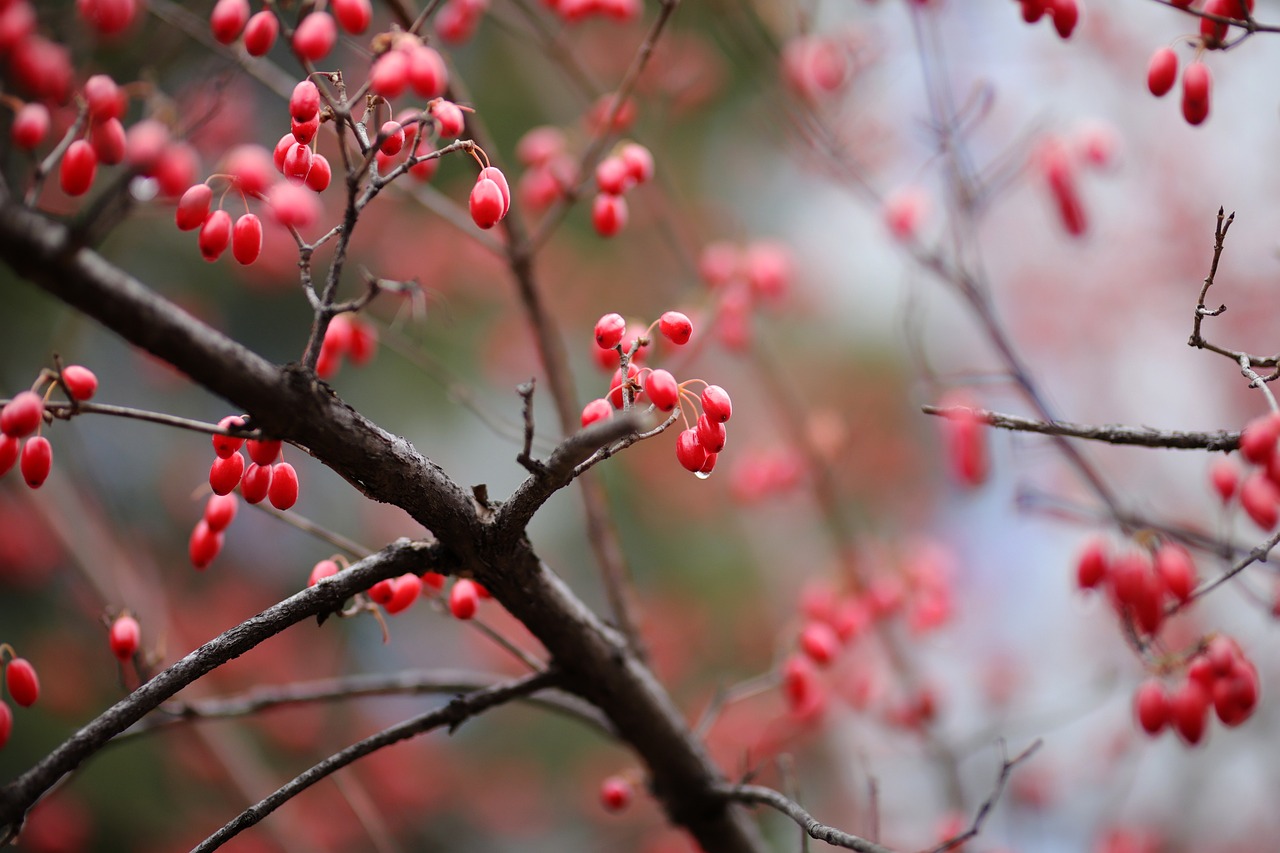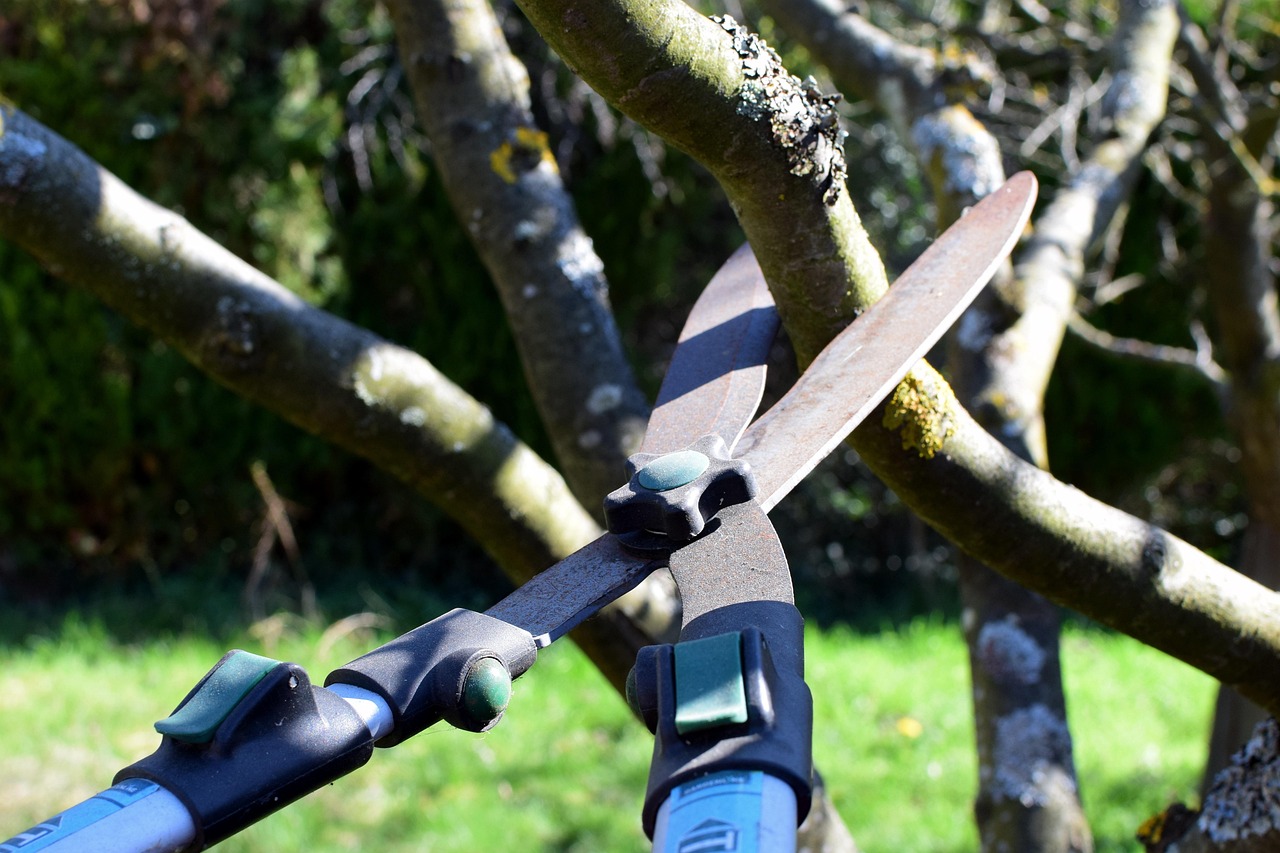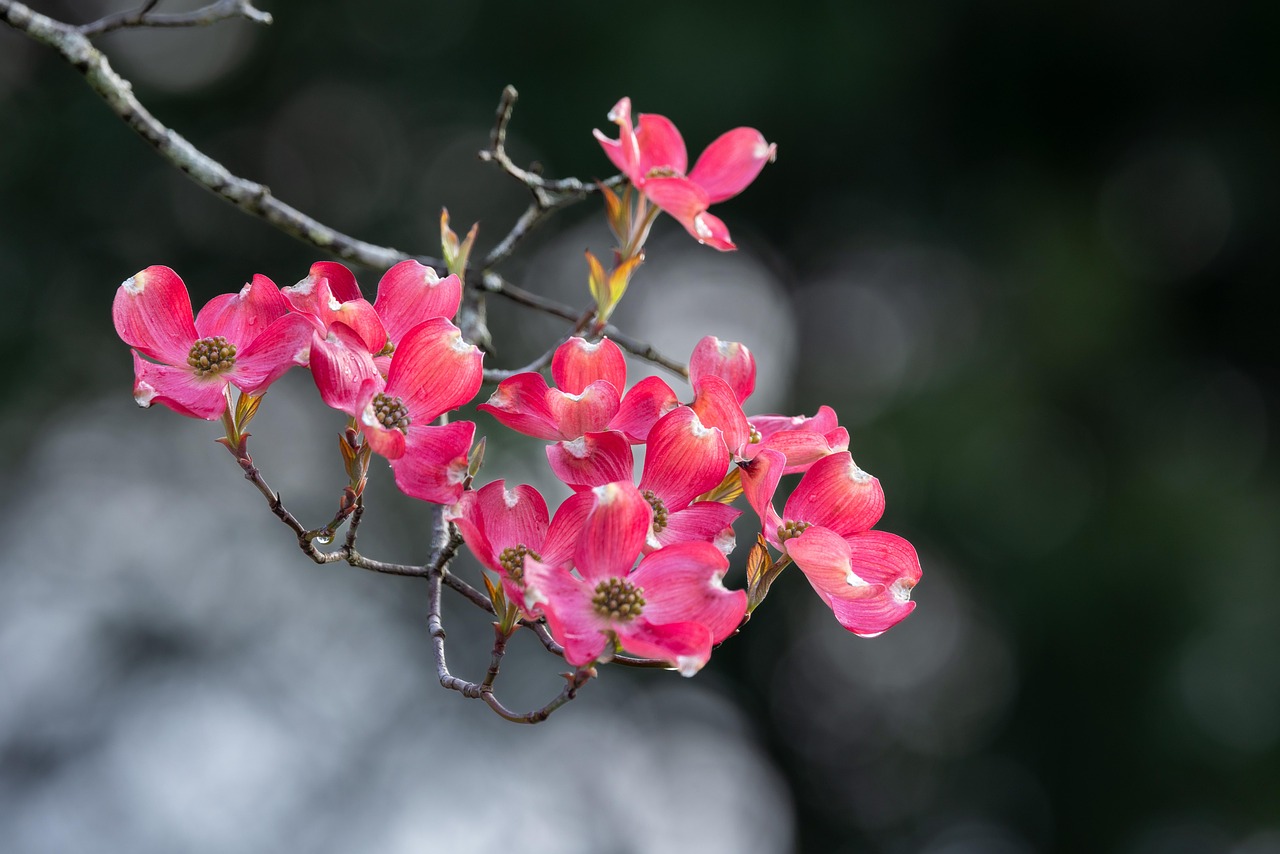To properly prune dogwood trees, focus on removing dead or diseased branches in early spring and shaping the tree in late fall. Use clean, sharp tools and make cuts at a 45-degree angle to encourage healthy growth and maintain the tree’s aesthetic appeal.
Dogwood trees are cherished for their stunning blooms and distinctive bark. These trees can thrive in a variety of environments, making them a popular choice for gardens and landscapes. However, proper care is essential to ensure their health and longevity. Pruning is a crucial part of this care routine, especially in spring and fall. It helps maintain the tree’s shape, encourages new growth, and improves air circulation.

The best time to prune dogwood trees varies by season. Spring pruning is typically done just before new growth begins, while fall pruning is recommended after the leaves have dropped. Understanding the right techniques and timing for pruning can make a significant difference in the overall health of your dogwood tree.
Understanding Dogwood Tree Growth
Dogwoods are known for their beautiful flowers, which can be pink, white, or red, depending on the species. They can grow as small trees or large shrubs, reaching heights of up to 30 feet. The growth habit of dogwoods can be affected by several factors, including soil quality, sunlight exposure, and water availability. Ensuring your tree has optimal growing conditions will help it thrive.
When considering pruning, it is essential to understand the structure of the dogwood tree. Pruning should aim to enhance the natural shape of the tree while encouraging healthy growth. Here are some key aspects to consider:

- Branches: Dogwood trees have a layered branching structure. Pruning should focus on removing lower branches to allow light penetration and air circulation.
- Flowers: Dogwood trees bloom on new growth. Pruning can help stimulate new flower buds for the following season.
- Health: Regular pruning helps remove dead or diseased branches, preventing the spread of pests and diseases.
Timing is critical when it comes to pruning dogwood trees. Spring pruning should take place when the tree is still dormant but just before growing season begins. This allows you to shape the tree without risking damage to new buds. Fall pruning, on the other hand, should be completed after leaf drop but before harsh winter conditions set in.
Spring Pruning Techniques
Spring is an excellent time to assess your dogwood tree’s health and shape. Start by inspecting the branches for any signs of disease or damage. Here are some steps to follow during spring pruning:
- Clean Your Tools: Before you begin, ensure your pruning tools are clean and sharp. This helps prevent the transfer of diseases.
- Remove Dead or Diseased Wood: Look for any branches that are dead, broken, or diseased. Cut these back to healthy tissue.
- Thin Out Crowded Branches: If branches are growing too closely together, selectively remove some to improve air flow and light penetration.
- Shape the Tree: Trim back any overly long branches to maintain a balanced shape.
During spring pruning, avoid cutting too much at once. A good rule of thumb is to remove no more than 25% of the tree’s foliage in a single season. This approach minimizes stress on the tree and promotes healthy growth.

Fall Pruning Techniques
Fall pruning is also important for maintaining a healthy dogwood tree. This time allows for additional shaping and preparation for winter. Here are some techniques specific to fall pruning:
- Assess Tree Health: Check for any signs of damage or disease that may have developed during summer months.
- Remove Damaged Branches: Cut away any branches that have sustained damage or show signs of decay.
- Encourage Future Growth: Prune to shape the tree and promote new growth in the spring.
- Avoid Heavy Pruning: Similar to spring, limit your cuts to around 25% of the total foliage.
By following these techniques in both spring and fall, you can ensure that your dogwood trees remain healthy and vibrant throughout the seasons. Proper pruning not only enhances their beauty but also contributes to their long-term health.
Common Mistakes to Avoid
When pruning dogwood trees, it’s essential to avoid common mistakes that can lead to damage or stress. Here are some pitfalls to watch out for:

- Poor Timing: Avoid pruning during frost or extreme heat as this can harm the tree.
- Over-Pruning: Cutting too much can weaken the tree and reduce flowering.
- Neglecting Clean Tools: Using dirty tools can introduce diseases into the tree.
By understanding these techniques and avoiding common mistakes, you can effectively care for your dogwood trees through proper pruning practices in both spring and fall.
Tools for Pruning Dogwood Trees
Having the right tools is crucial for effective and safe pruning of dogwood trees. Using improper tools can lead to uneven cuts, which can damage the tree. Here are some essential tools you should consider:
- Bypass Pruners: Ideal for cutting small branches up to ¾ inch thick. They create clean cuts that promote healing.
- Loppers: Useful for branches that are thicker than what pruners can handle, typically up to 2 inches. They provide extra leverage.
- Saw: A hand saw or pruning saw is needed for larger branches. Ensure it is sharp to make clean cuts.
- Hedge Shears: These can be used for shaping and trimming smaller branches or foliage.
- Gloves and Safety Goggles: Protect your hands and eyes during the pruning process.
Before you start pruning, check that all tools are in good condition. Sharpen blades if necessary and clean them with a disinfectant to prevent the spread of diseases.
Identifying the Best Time to Prune
Understanding the best timing for pruning is vital for the health of your dogwood tree. Different factors, including local climate and the specific species of dogwood, can influence the optimal time for pruning. Here’s a breakdown of considerations:
Spring Pruning
Spring is generally the preferred time for pruning dogwoods because it allows for healthy regrowth. However, consider these factors:
- Timing: Aim to prune when the tree is still dormant but before active growth begins. This may vary depending on your local climate.
- Weather Conditions: Wait for a dry day to avoid spreading diseases through wet cuts.
Fall Pruning
Fall pruning can also be beneficial, especially if you missed spring pruning or need to address specific issues. Consider the following:
- After Leaf Drop: Prune after the leaves have fallen to better assess the tree’s structure.
- Avoid Late Pruning: Do not prune too late in the fall as this can encourage new growth that may not survive winter.
Pruning Techniques for Dogwood Trees
Employing the right pruning techniques ensures healthy growth and minimizes damage. Here are several effective methods:
Crown Thinning
This technique involves selectively removing branches to enhance light penetration and air circulation within the canopy. Follow these steps:
- Selectively choose branches that cross each other or grow inward towards the center of the tree.
- Cut these branches back to their point of origin or to a healthy lateral branch.
- Aim to maintain an even distribution of branches throughout the canopy.
Crown Raising
Crown raising is useful for improving access beneath the tree and reducing overcrowding. Here’s how it’s done:
- Identify lower branches that obstruct pathways or views.
- Prune these branches back to a lateral branch or remove them entirely if they are too low.
Crown Reduction
This technique reduces the overall height of the tree while maintaining its natural shape. Follow these steps:
- Avoid cutting more than one-third of the tree’s height in a single season.
- Select a few taller branches and prune them back to a lateral branch that is at least one-third of their size.
Post-Pruning Care
After you have finished pruning, proper care is essential to ensure your dogwood tree recovers well. Here are some tips:
- Watering: Ensure the tree receives adequate water, especially during dry spells. Newly pruned trees require more hydration.
- Fertilization: Consider applying a balanced fertilizer in early spring to promote new growth and recovery.
- Pest Management: Monitor for pests and diseases after pruning. Treat any issues promptly to prevent further damage.
With careful attention to these practices, your dogwood trees will thrive and provide beauty in your landscape for years to come.
Pest and Disease Management for Dogwood Trees
Dogwood trees can be susceptible to various pests and diseases. Being aware of these issues is crucial for maintaining the health of your tree, especially after pruning. Early detection and appropriate treatment can help prevent serious damage.
Common Pests
Several pests can affect dogwood trees, leading to stress and potential decline. Here are some common pests to watch for:
- Dogwood Borer: This insect larvae bore into the trunk and branches, weakening the tree. Look for sawdust-like frass at the base of the tree.
- Scale Insects: These small, immobile insects attach themselves to branches and leaves, sucking sap and weakening the tree. A sticky residue may indicate their presence.
- Aphids: These tiny insects feed on young leaves and shoots. They can cause curling leaves and may lead to sooty mold growth.
Common Diseases
Dogwoods are also prone to certain diseases that can impact their health. Here are a few to be aware of:
- Powdery Mildew: This fungal disease manifests as a white powdery coating on leaves, typically in warm, dry conditions. It can lead to leaf drop if not treated.
- Anthracnose: This disease causes dark, sunken lesions on leaves and stems. It thrives in wet conditions and can result in premature leaf drop.
- Dogwood Blight: Caused by a fungus, blight results in blackened leaves and stems. In severe cases, it can kill branches or the entire tree.
Preventative Measures
Preventing pest infestations and disease outbreaks is often easier than treating them. Here are some effective strategies:
- Proper Pruning: Maintain an open canopy through proper pruning to improve air circulation and reduce humidity around the tree.
- Regular Inspections: Frequently check your dogwood trees for signs of pests or diseases. Early detection allows for prompt action.
- Healthy Soil: Ensure your dogwood has well-drained soil with adequate nutrients. Healthy trees are more resilient against pests and diseases.
- Avoid Overwatering: Excess moisture can lead to root rot and fungal growth. Water deeply but infrequently to promote strong root systems.
Treatment Options
If you discover pests or diseases on your dogwood trees, prompt treatment is essential. Here are some common treatment options:
Pest Control Methods
Here are a few effective methods for managing pests:
- Insecticidal Soap: This is effective against soft-bodied insects like aphids and scale. Apply it directly to affected areas following the manufacturer’s instructions.
- Neem Oil: This natural pesticide disrupts the life cycle of various pests. It is safe for beneficial insects when used correctly.
- Pheromone Traps: These traps attract and capture pests like dogwood borers, helping to manage their populations.
Disease Treatment Options
Treating diseases requires a slightly different approach:
- Fungicides: Apply fungicides specifically formulated to treat diseases like powdery mildew or anthracnose. Follow label directions carefully.
- Remove Affected Areas: For serious outbreaks, prune away infected branches or leaves to prevent the spread of disease.
Cultural Practices for Healthier Trees
Cultural practices can significantly impact the overall health of your dogwood trees. Implementing good practices can lead to healthier trees that are less prone to pests and diseases. Consider the following:
- Mulching: Apply a layer of organic mulch around the base of your dogwood tree. This helps retain moisture, suppress weeds, and improve soil quality.
- Water Management: Use drip irrigation or soak the soil during dry spells instead of surface watering to promote deep root growth.
- Selecting Disease-Resistant Varieties: If planting new dogwoods, consider species or cultivars that are known for their resistance to common pests and diseases.
By taking proactive steps in pest and disease management, you can ensure that your dogwood trees remain healthy and vibrant throughout their life cycle.
Enhancing Aesthetic Appeal
In addition to health and maintenance, pruning dogwood trees can significantly enhance their aesthetic appeal in your landscape. A well-pruned dogwood showcases its natural beauty and floral display, making it a focal point in any garden. Consider these tips for maximizing the visual impact of your dogwood trees:
- Shaping: Use pruning techniques to shape your dogwood tree in a way that complements the surrounding landscape. A well-shaped tree can create a stunning silhouette against the sky.
- Seasonal Interest: Prune in a manner that encourages blooms in spring and vibrant foliage in fall. This seasonal interest keeps your garden visually appealing year-round.
- Balance: Maintain a balanced structure by evenly distributing branches. This not only enhances the tree’s beauty but also supports its health by preventing weak spots.
Preparing for Seasonal Changes
Dogwood trees, like all plants, go through seasonal changes that can affect their health and appearance. Preparing for these changes is essential for keeping your trees thriving. Here are some considerations for each season:
Spring Preparation
As spring approaches, take time to prepare your dogwood tree for the growing season:
- Check for Damage: Inspect the tree for any winter damage or dead branches that may need pruning.
- Fertilize: Apply a balanced fertilizer to provide nutrients necessary for new growth.
- Watering Schedule: Establish a regular watering schedule as temperatures warm up, ensuring the soil remains adequately moist.
Summer Maintenance
During the summer months, maintaining your dogwood tree’s health is crucial:
- Monitor Pests: Keep an eye out for pests and address any infestations promptly to prevent damage.
- Prune Wisely: If necessary, conduct light pruning to remove any dead or unhealthy foliage without disrupting the overall shape.
- Mulching: Apply mulch to help retain moisture and suppress weeds during hot spells.
Fall Preparation
As fall approaches, consider these steps to prepare your dogwood tree for winter:
- Final Pruning: Complete any necessary pruning to shape the tree and remove any dead branches.
- Watering Adjustment: Adjust your watering routine to reduce frequency as the temperatures cool.
- Frost Protection: Consider wrapping young trees with protective materials if frost is expected.
Winter Care
During winter, the focus shifts to protecting your dogwood tree:
- Avoid Heavy Snow Accumulation: Gently shake off heavy snow from branches to prevent breakage.
- Inspect for Damage: After snow melts, check for any damage or disease that may have developed during the cold months.
- Plan Ahead: Use winter months to plan your spring pruning and care routine.
Final Thoughts
Caring for dogwood trees through proper pruning and maintenance is vital for their health and beauty. By understanding the best practices for pruning, pest management, and seasonal care, you can ensure that your dogwoods remain vibrant and lush throughout the year. Remember that each tree is unique; observing its growth and adapting your care routine will yield the best results.
The effort you put into nurturing your dogwood trees will not only enhance their aesthetic value but also contribute to a thriving garden ecosystem. With patience and care, these beautiful trees can bring joy and beauty to your landscape for many years to come.
As you implement these tips and techniques, enjoy watching your dogwood trees flourish. Their stunning blooms and rich foliage will surely make them a cherished part of your outdoor space.
